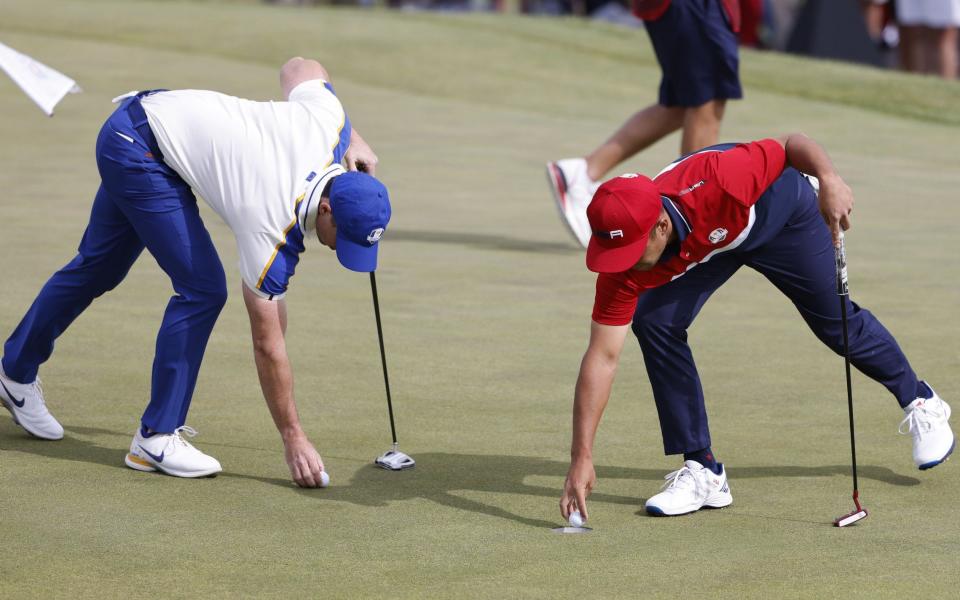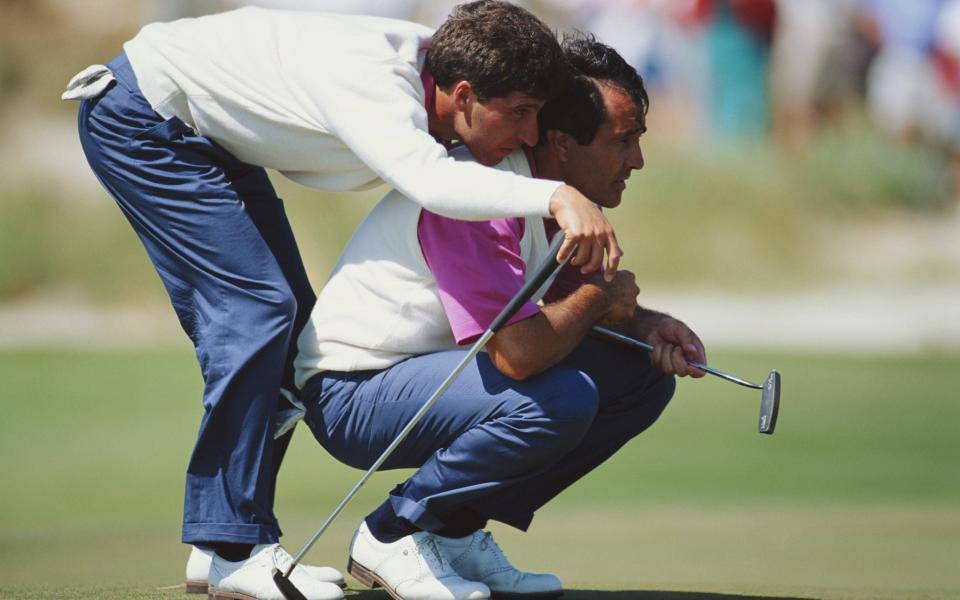
The Ryder Cup stands apart from professional golf’s biggest events by putting the world’s elite players in a team environment.
USA have not won lifted the Ryder Cup on European soil since 1993, and a dozen Americans will travel to Rome this September looking to change that record.
Europe suffered a bruising defeat at Whistling Straits last time out, and will need a fresh core of younger players to gel if captain Luke Donald is to lead them to victory.
Fears of another thrashing have abated with the likes of Tyrrell Hatton, Viktor Hovland and Tommy Fleetwood showing strong form and Jon Rahm and Rory McIlroy already qualified.
This is how the Ryder Cup format works.
How does matchplay work?
Golf’s four major championships and the vast majority of tournaments are strokeplay events, where the field play 72 holes and the player with lowest cumulative score is crowned the winner.
The Ryder Cup is not strokeplay, but matchplay, meaning pairs or individuals are head to head. The pair or player with the lowest score on the first hole, wins the hole, and thus are said to be one up. If they win the next hole they will be two up. If their opponents win the next hole it will be back to all square and so forth.
The match is won when a pair of player leads by a greater number of holes than remain (if they are three up after 16 holes, they will have won 3&2 because they are three up with only two holes remaining).
Another feature of matchplay is the players can choose to concede close-range putts to their opponents, but this can become a source of mind games.
How does the Ryder Cup scoring system work?
Europe and USA will go head-to-head in eight fourball matches, eight foursomes matches and 12 singles matches. Each match is worth one point, with tied matches worth half-a-point to each team. That means 14-and-a-half points are required to win the Ryder Cup. Should holders USA reach 14 points, they will be assured a tie and therefore would retain the Ryder Cup at worst.
On Friday and Saturday, there will be four fourball matches and four foursomes matches, split up into morning and afternoon sessions. This means in any one session each team will have eight of their 12 golfers on the course, so team captains Donald and Zach Johnson must decide who to select and who to leave out. Calculating which players should be paired together is also an important part of the captain’s job.
The 12 singles matches are on Sunday, when every golfer will play on the day the Ryder Cup is decided.

What is the difference between fourballs and foursomes?
Fourballs
Two European players against two Americans. All four players play the course as normal with their own ball. The pair who record the lowest score on a hole (individual score, not aggregate) win the hole. So if three players par the first hole, but a European birdies, then Europe go one-up.
This effectively means two bites of the cherry at every hole, so captains favour picking aggressive players in this format. Even if they are slightly erratic, there is the insurance of a second ball in play. That’s the theory at least.
A common strategy in fourballs is for one player to dissect a hole more conservatively, keeping his ball in play so his partner can be more cavalier.

Foursomes
Two European players against two Americans. However, in this format each pair has just one ball in play with shots taken alternately. It is a much quicker format but a far harder discipline. One bad shot can cost you a hole, in contrast to fourballs when you have your partner’s ball to rely on.
For this reason, captains tend to favour their most consistent and accurate ball-strikers who can keep the ball in play. Par tends to be a good score in foursomes, while fourballs is all about making birdies.
Players tee of on alternate holes, so will plot their way through the course beforehand to decide which player should take the odds and which the evens. For example, you might try to get the longest driver teeing off on most of the par fives.
Singles
One European against one American in direct matchplay.

